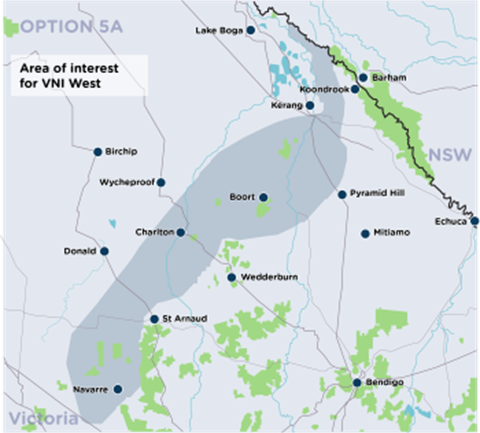
Murray River Council is throwing support behind calls for the proposed VNI West transmission line to be routed underground.
This follows wide-spread community concern for the current proposed pathway which would see a series of high voltage transmission lines traverse through valuable agricultural land near Moulamein.
Acting Mayor, Frank Crawley said whilst Council understands there is a desire for renewable energy initiatives, the infrastructure to support this needs to offer the least amount of impact to the local area.
“The infrastructure is proposed to be constructed on high value irrigated cropping land, which is one of our region’s largest economic drivers.”
“We are concerned that this would threaten the use of this land by restricting agricultural activities around the proposed transmission infrastructure, drastically impacting the livelihood of our farmers.”
Cr Crawley said building energy connectors underground would potentially avoid impacts on farming.
“The cost-benefit analysis in the short-term may be quite different to long-term, but the economic and social outcomes for the community would be far more positive.”
Murray River Council is situated to the north of the REZ Zone in Victoria near Kerang, to the south of the REZ Zone near Hay, and southwest of Dinwan Substation connection point near Deniliquin with the main Wagga Wagga-to-South Australia transmission line running roughly parallel to Murray River Council in the north.
“Our residents are surrounded by renewable energy projects on all fronts, which means we are in line for the inevitable disruption brought about by the delivery of transmission infrastructure,” Cr Crawley said.
“It will not be a win-win for Murray River Council. We will, more accurately, be collateral damage.”
In finalising the proposed route and infrastructure, Council is calling on the State and Federal Governments to carefully consider the huge economic and personal impacts on potentially affected landholders.
“We’re not in denial that the line will cross Murray River Council somewhere and therefore we don’t have a great deal of choice but to look at the ‘least worst’ option,” Cr Crawley said.
“To us, this is advocating for the lines to go underground.”







